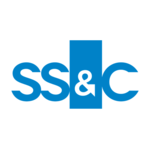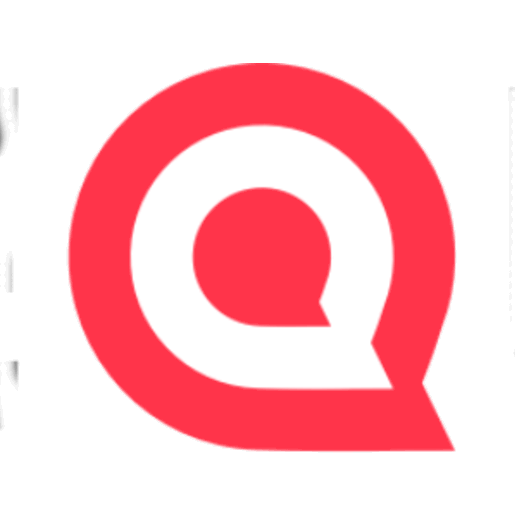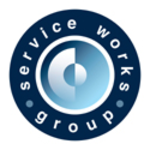Description

Asset Mapping

SKYLINE Facilities Maintenance
Comprehensive Overview: Asset Mapping vs SKYLINE Facilities Maintenance
Asset Mapping
a) Primary Functions and Target Markets
Primary Functions: Asset Mapping is a platform designed to provide real-time tracking and management of physical assets across various industries. Its core functionalities include:
- Real-time Asset Tracking: Offers live mapping of assets to monitor their locations and status.
- Data Visualization: Provides comprehensive visualization tools for better decision-making and operational efficiency.
- Predictive Maintenance: Utilizes data analytics to predict potential failures and maintenance needs, thereby reducing downtime.
- Integration Capabilities: Can be integrated with various IoT devices and existing enterprise systems.
Target Markets: Asset Mapping targets a broad range of industries, including:
- Facilities Management: Helping manage physical assets in large facilities.
- Retail: Tracking inventory and equipment within stores.
- Healthcare: Managing medical equipment to improve efficiency and service.
- Manufacturing: Monitoring machinery and workflow processes.
b) Market Share and User Base
Asset Mapping has carved a niche in industries that heavily rely on physical asset management and IoT integrations. It typically competes with other asset management tools and platforms that offer IoT solutions. However, specific numbers on market share and user base might not be readily available without proprietary industry reports.
SKYLINE Facilities Maintenance
a) Primary Functions and Target Markets
Primary Functions: SKYLINE Facilities Maintenance is a software solution focused on streamlining the maintenance and management of facilities. Key functions include:
- Maintenance Management: Scheduling and tracking of maintenance activities to ensure operational efficiency.
- Work Order Management: Provides tools for creating, tracking, and managing work orders for repairs and maintenance.
- Asset Management: Keeps detailed records of assets, including maintenance history and lifecycle management.
- Reporting and Analytics: Offers robust reporting tools to analyze maintenance costs, frequency, and efficiency.
Target Markets: The primary markets for SKYLINE include:
- Commercial Real Estate: Helping property managers maintain and optimize building operations.
- Educational Institutions: Managing facilities across campuses.
- Healthcare Facilities: Ensuring compliance and operational efficiency in hospitals and clinics.
- Government Buildings: Coordinating maintenance in public infrastructure and buildings.
b) Market Share and User Base
SKYLINE Facilities Maintenance is a key player in the facilities management sector, particularly within commercial real estate and educational institutions. Again, specific market share metrics are generally acquired through industry research and analysis services.
c) Key Differentiating Factors
-
Technology Integration:
- Asset Mapping is renowned for its robust integration capabilities with IoT, providing real-time data visualization and predictive analytics. This feature positions it strongly for companies focused on innovation and technological integration.
- SKYLINE Facilities Maintenance offers comprehensive maintenance and work order management, excelling in automating and managing day-to-day operational tasks.
-
Industry Focus:
- Asset Mapping serves a wider array of industries with a focus on tracking and managing physical assets in dynamic environments.
- SKYLINE Facilities Maintenance is more specialized, catering specifically to facilities management, emphasizing maintenance efficiency and operational oversight.
-
Functionality Scope:
- Asset Mapping focuses heavily on the mapping and tracking of assets, suitable for industries where asset location and condition monitoring are crucial.
- SKYLINE Facilities Maintenance offers a broader array of facilities management features, making it ideal for organizations needing holistic building management solutions.
-
User Interface and Experience:
- Asset Mapping emphasizes data visualization and a user-friendly interface suited to real-time monitoring.
- SKYLINE Facilities Maintenance centers on administrative and work order interfaces that streamline facility and maintenance operations.
Both products serve distinct but sometimes overlapping needs, and their selection would depend on the specific requirements of the business or industry in question.
Contact Info

Year founded :
2012
+44 20 7060 6014
Not Available
United Kingdom
http://www.linkedin.com/company/asset-mapping

Year founded :
Not Available
Not Available
Not Available
Not Available
Not Available
Feature Similarity Breakdown: Asset Mapping, SKYLINE Facilities Maintenance
To provide a feature similarity breakdown for Asset Mapping and SKYLINE Facilities Maintenance, I'll outline the comparisons based on the information typically available for such software products. Keep in mind that specific features can vary based on updates and editions, so users should consult the most recent product documentation for detailed specifics.
a) Core Features in Common:
-
Asset Management:
- Both Asset Mapping and SKYLINE Facilities Maintenance offer robust asset management capabilities, allowing users to track and manage physical assets effectively.
-
Preventive & Predictive Maintenance:
- Each software provides tools to schedule and manage preventive maintenance, with capabilities to predict maintenance needs based on usage and historical data.
-
Work Order Management:
- They both support work order creation, tracking, and management, helping streamline maintenance operations and improve efficiency.
-
Reporting and Analytics:
- Both products include features for generating reports and analytics to track maintenance performance, asset utilization, and other key metrics.
-
Integration Capabilities:
- These platforms are designed to integrate with other enterprise systems like ERP, accounting, and other facility management tools.
b) User Interface Comparison:
-
Asset Mapping:
- Known for its intuitive dashboard and visual-centric interface, Asset Mapping employs dynamic mapping features that provide a visual representation of assets in real-time.
- Emphasizes ease of use with drag-and-drop features and customizable widgets that allow users to tailor their dashboards to their needs.
-
SKYLINE Facilities Maintenance:
- Typically features a more standard CMMS interface focused on form-based data entry and list views.
- Offers a straightforward and functional interface, appealing to users who need efficient, no-frills access to maintenance data.
c) Unique Features:
-
Asset Mapping:
- Real-Time Location Tracking: One of its standout features is the ability to track asset locations in real-time on an interactive map, which is particularly useful for large facilities or campuses.
- IoT Integration: Strong support for Internet of Things (IoT) devices, enabling more sophisticated asset monitoring and management through various connected sensors.
-
SKYLINE Facilities Maintenance:
- Robust Accounting and Financial Integration: Known for deeper integration with accounting and financial systems, which can be a significant advantage for organizations looking to unify their operational and financial data.
- Industry-Specific Modules: Offers tailored modules for specific industries, ranging from healthcare to education, providing specialized tools and settings for unique operational requirements.
It's important to verify these features with current product offerings, as updates and new releases might introduce changes not covered in this general overview.
Features

Reporting and Analytics
Asset Identification
Security and Compliance
Integration and Compatibility
Visualization Tools

Work Order Management
Reporting and Analytics
Preventative Maintenance
Inventory Management
Team Collaboration
Best Fit Use Cases: Asset Mapping, SKYLINE Facilities Maintenance
Asset Mapping and SKYLINE Facilities Maintenance are tools designed to enhance the efficiency and efficacy of facility management and asset tracking. Both cater to distinct needs within the landscape of business operations and asset management. Below is a breakdown of their best fit use cases:
Asset Mapping:
a) Best Fit for Businesses or Projects:
-
Large Enterprises with Diverse Assets: Asset Mapping is particularly suited for organizations with a vast array of assets dispersed across multiple locations, such as multinational corporations, universities, or hospital networks. This tool efficiently handles complex asset portfolios, allowing seamless tracking, management, and visualization.
-
Industries with Critical Infrastructure Needs: Sectors such as data centers, telecommunications, and utilities benefit significantly from Asset Mapping because these industries require real-time oversight of physical and digital assets to minimize downtime and optimize resource allocation.
-
Smart City Projects: Cities implementing smart infrastructure solutions can leverage Asset Mapping to track and manage city-owned assets like streetlights, traffic signals, and public transport facilities. This facilitates enhanced service delivery and better urban planning.
-
Construction and Real Estate Development: Companies involved in large-scale construction or real estate projects can use Asset Mapping to keep track of equipment location, status, and maintenance schedules, thereby ensuring project timelines remain on track.
SKYLINE Facilities Maintenance:
b) Preferred Scenarios:
-
Facilities Focused Industries: SKYLINE Facilities Maintenance is ideal for businesses that prioritize the upkeep and operational efficiency of their physical facilities, such as manufacturing plants, schools, and office complexes. This tool provides comprehensive maintenance management capabilities, including scheduling, work order tracking, and resource allocation.
-
Organizations with High Regulatory Scrutiny: In sectors like healthcare or food production, where compliance with health and safety regulations is critical, SKYLINE ensures that facilities are properly maintained and meet required standards.
-
Service Delivery Centers: Call centers, hospitality venues, or any service-driven entities can utilize SKYLINE for maintaining the optimal operation of their facilities, ensuring that their service delivery is not hindered by facility-related issues.
d) Catering to Different Industry Verticals or Company Sizes:
Both Asset Mapping and SKYLINE Facilities Maintenance are versatile products but cater to different facets of asset and facility management, which makes them suitable for varied industry verticals and company sizes:
-
Asset Mapping: Generally appeals to larger organizations or projects that require a holistic view of asset locations and statuses. It supports scalability and complexity, catering to industries like logistics, transportation, healthcare, and any business undergoing digital transformation initiatives.
-
SKYLINE Facilities Maintenance: Targets organizations where the maintenance of physical premises is crucial. It fits medium to large enterprises that need systematic facilities management but can also be scaled down for smaller businesses with significant facility management needs, helping them maintain operational efficiency.
In summary, the choice between Asset Mapping and SKYLINE Facilities Maintenance depends on the primary focus of the operation—asset tracking and management versus facility maintenance—and the specific needs dictated by industry standards and company size.
Pricing

Pricing Not Available

Pricing Not Available
Metrics History
Metrics History
Comparing undefined across companies
Conclusion & Final Verdict: Asset Mapping vs SKYLINE Facilities Maintenance
To provide a conclusion and final verdict on Asset Mapping and SKYLINE Facilities Maintenance, let's analyze each product based on the outlined criteria:
a) Considering all factors, which product offers the best overall value?
Best Overall Value: Asset Mapping
Asset Mapping tends to offer a more comprehensive and versatile solution that can integrate with various systems, providing a broad view of assets and their conditions in real-time. This allows for proactive maintenance and better resource management, which represent significant value in optimizing operational efficiency and reducing costs.
b) Pros and Cons of Each Product
Asset Mapping
Pros:
- Real-Time Monitoring: Provides real-time data and insights into asset conditions and performance.
- Scalability: Can scale easily with the growing needs of a business and adapt to different sectors.
- Integration Capabilities: Supports integration with various systems and platforms, offering flexibility and extended functionality.
- Usability: User-friendly with intuitive interfaces, which can lead to a quicker adoption rate among staff.
Cons:
- Cost: Initial setup and ongoing maintenance may be higher compared to simpler systems.
- Complexity: The extensive features may be overwhelming for small operations that do not require comprehensive asset tracking.
SKYLINE Facilities Maintenance
Pros:
- Focus on Facility Maintenance: Tailored specifically for facilities management, potentially offering better efficacy in this niche.
- Cost-Effective for Small Operations: Typically offers a more straightforward setup with potentially lower upfront costs compared to more comprehensive solutions.
- Ease of Use: Generally simpler for teams to learn and operate, which might suit smaller facilities.
Cons:
- Limited Scalability: May not effectively scale with larger, more complex operations requiring extensive asset management.
- Fewer Integrations: Limited integration capabilities with other systems might be a downside for operations needing a holistic approach.
c) Recommendations for Users Deciding Between Asset Mapping vs SKYLINE Facilities Maintenance
-
Consider Your Business Needs: If your business requires extensive asset management and has a diverse range of systems that need integration, Asset Mapping is likely the better choice. It is particularly suitable for larger-scale businesses with complex infrastructures.
-
Budget Constraints: For smaller businesses or those predominantly focused on facilities maintenance with limited budgets, SKYLINE Facilities Maintenance might provide sufficient functionality without the added costs associated with more comprehensive systems.
-
Growth and Expansion Plans: If your organization intends to scale up operations or is planning significant growth, consider the scalable nature of Asset Mapping. This will help accommodate future needs without requiring a system overhaul.
-
Ease of Implementation and Use: For teams that may struggle with the complexity of sophisticated software, SKYLINE Facilities Maintenance offers a simpler, more straightforward approach, which might aid in achieving quicker returns on investment through faster implementation and adoption.
Final Verdict:
Ultimately, the decision between Asset Mapping and SKYLINE Facilities Maintenance should be based on the specific operational needs, growth objectives, and budgetary constraints of the business. Asset Mapping offers superior value for larger and more complex business operations requiring detailed asset management, while SKYLINE Facilities Maintenance serves well for smaller, budget-conscious operations with a focus on facility management.
Add to compare
Add similar companies



